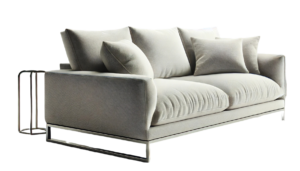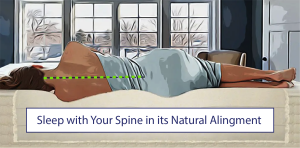Notice how I said “sleep in” and not “sleep on” in the title? As far as we are concerned the right way to sleep is “in” your mattress and not on it!
What every bed should have, and shouldn’t have…
- New developments in foam have made foam the fastest growing sleep surface.
- Foam is the key comfort ingredient used in all mattresses.
- The layering of different grades of foam gives you proper comfort and support that maintains your spine in its natural alignment.
- Foam is non-allergenic, dust mite free and recommended by Doctors all over the world.
- Consumers don’t really know what to buy. Once they have had a bad experience then they look to get educated. The smart ones go directly to the manufacturer where they can get better quality sleep options at a variety of price points; usually much less than retail.
What has foam meant to the bedding industry?
Foam has had more impact on the design of sleep products in the last decade than any other single material or element. It’s providing great opportunities for innovation. It’s encouraging a better understanding of sleep product attributes. Overall, the consumer wins with better quality sleep.
What are the attributes of an ideal sleep surface?
First, basic comfort. Above everything else, any and every bed has to be physically comfortable. Â You just can’t have a relaxed, healthful sleep without it.
Many feel that comfort is highly subjective, and different for every individual.
I disagree. Comfort is objective and measurable with our Ergocheck pressure testing system. You want to stay under a maximum of 0.5 lbs. of pressure on a square inch of the body surface. Regardless of your size or shape, any increase beyond that begins to restrict circulation and starts the muscle tension that produces restless tossing and turning.
Now we’re talking about pressure points.
Comfort, absolute physical comfort, is nothing more than the absence of pressure points.
And foam gets rid of them?
Only sleep in space or on a clinically perfect flotation system will do that. But foam does minimize their effect better than any other practical material available today. Its characteristic ability to contour and conform to an irregular shape, in this case, the human body, is unsurpassed.
How does contouring provide comfort?
It allows more of the body to contact the sleep surface. The more square inches of contact, the less overall pressure per square inch, and the less opportunity for discomfort in any local area. In effect, foam’s contourability (is that really a word?) allows every inch of the body to literally carry its own weight. Every type of sleep product, even water, and air beds, are using more and more foam on top to add comfort. The major spring mattress manufacturers have added full-foam mattresses to their line-ups to profit on the popularity of foam. However, the smart consumer not only looks at the price but what grade(s) of foam they are buying for that price.
What’s next on the most important sleep attribute list?
Support. Lots of room for discussion here. Two real camps with basically differing views. First, there are those who have been conditioned over the years to equate support with firmness…” a good firm mattress is necessary for healthful sleep, a soft mattress means morning backache.” Then, there are those who say firm is needlessly uncomfortable, impeding relaxing sleep. Let’s look at some suggested criteria for support.
Simply stated:
“the sleep surface should hold the spine as close as possible to its natural alignment while standing, regardless if you are a side sleeper.”
There are a couple of other support considerations we can touch on later, but I agree completely with the natural spine alignment criteria. Support is nothing more than the absence of sag. Sag is the enemy, not soft.
Water and air beds provide infinite contouring on their own.
True. But deep contouring can also create some problems for them. Both air and water operate within enclosed reservoirs. The volume of fluid that is displaced by a hip or a shoulder moves to another unpressured part of the bed, usually the corners, and can distort the shape of the sleep.
It generally produces a ‘hammock’ or sag effect, exactly what you don’t want for natural spine alignment. At the same time, this action can also tighten the surface causing a tough membrane that can actually work against comfort. However, a number of engineering refinements, including isolated and separate chamber reservoirs, and foam toppers, have greatly reduced both the distortion and the membrane feeling in these flotation systems.
In foam flotation, the volume of air displaced by the same hip or shoulder moves easily through the open cell structure of the foam and is vented to the atmosphere without distorting the shape of the sleep surface or support system.
Yes. Support should be independent. Depending on your weights you may need a mattress with two different firmnesses. At Foamite, we do this all the time. Unequal weight, or toss and turn activity should be restricted to the individual, and not influence the other sleeping partner. Only foam, without a rigid connected structure, and with its ability to react only to the immediate area of applied pressure, or weight, makes these attributes a practical reality.
Final Note
In summary, those are the sleep benefits that quality sleep products should offer. They may, or may not line up with the attributes as seen by the merchandiser, or the consumer. The uncomfortable, overly firm bed is still very much in vogue.
Consumers don’t really know what to look for in sleep products. They buy what they are sold. The onus of providing a better quality sleep lies with the sleep products manufacturers and designers, and their deeper understanding of true sleep attributes, and the ways to meet them.
Sincerely,
FOAMITE INDUSTRIES INC.
R.C. (Bob) Dimas
Be the best that you can be by doing whatever is necessary to improve the quality of your sleep!









